The size of your vehicle tires affects how satisfied you may be with it. So which is better: 33 vs. 35 vs. 37-inch tires. As a car owner, you may find it challenging to settle for a particular tire size. But don’t worry, we’ve got you covered.
This article will compare three tire sizes: the 33, 35, and 37-inch tires. Read on to find out the best among the trio.
Let’s get started!
33 vs. 35 vs. 37 Inch Tires: A Side-by-Side Comparison Table
First, what do 33, 35 and 37 inch mean? These numbers indicate the tires’ diameter measured in inches. In order to put things into perspective for you, we have provided you with a table that highlights the strengths and weaknesses of these tire sizes.
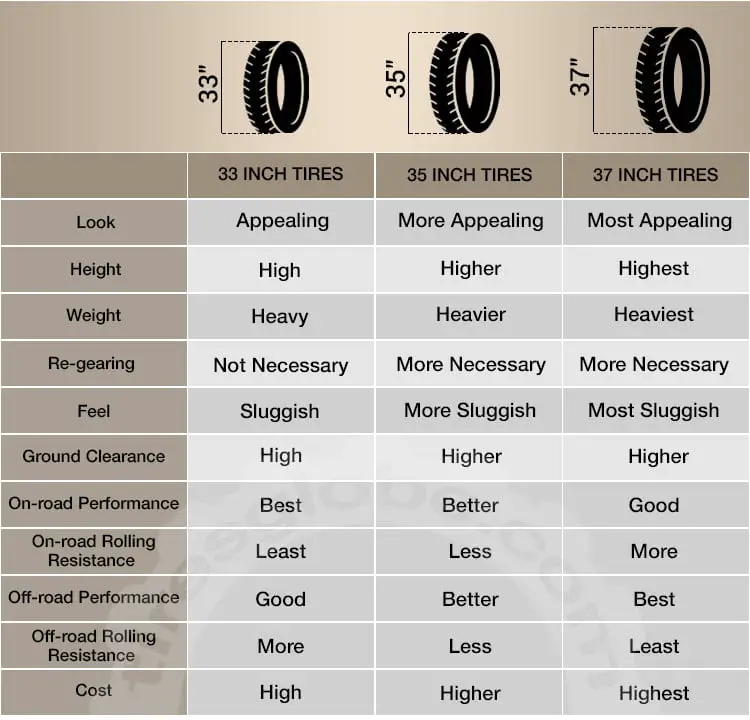



33 vs. 35 vs. 37 Inch Tires: Detailed Comparison
The above table gives you a glimpse of what will follow shortly below. This section brings the three tire sizes together for a detailed comparison. Without further talk, let’s dive right in.
Look
The look of a tire and its size often go hand-in-hand. This is because a bigger tire allows for a higher sidewall and a more complex tread design.
In terms of the look, the 37-inch tire is the most appealing. It features a higher sidewall and more complex tread design, giving your vehicle that off-road look.
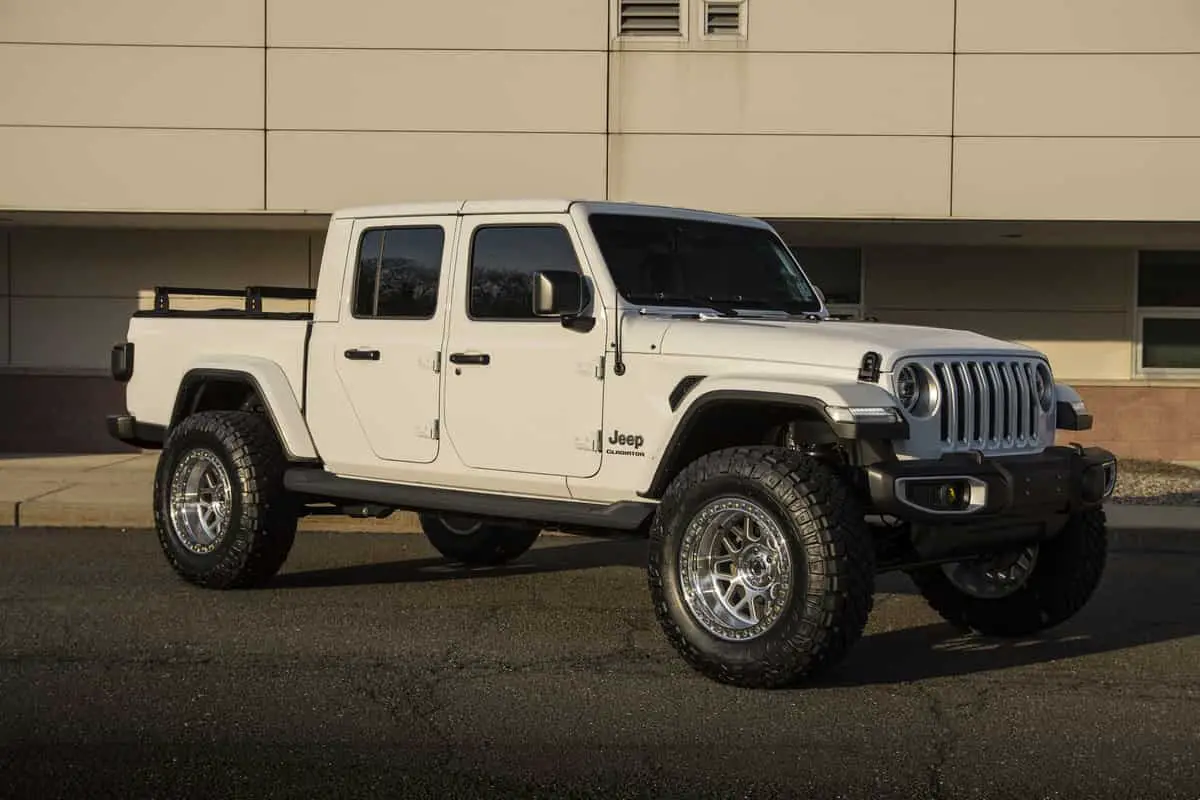
Following the 37-inch tire is the 35-inch. Although just 2 inches apart, the difference in the look is quite apparent even to an untrained eye. Featuring in-depth treads which offer a better grip while keeping aesthetics on the high side, the 35-inch tire is more appealing than the 33-inch tire.
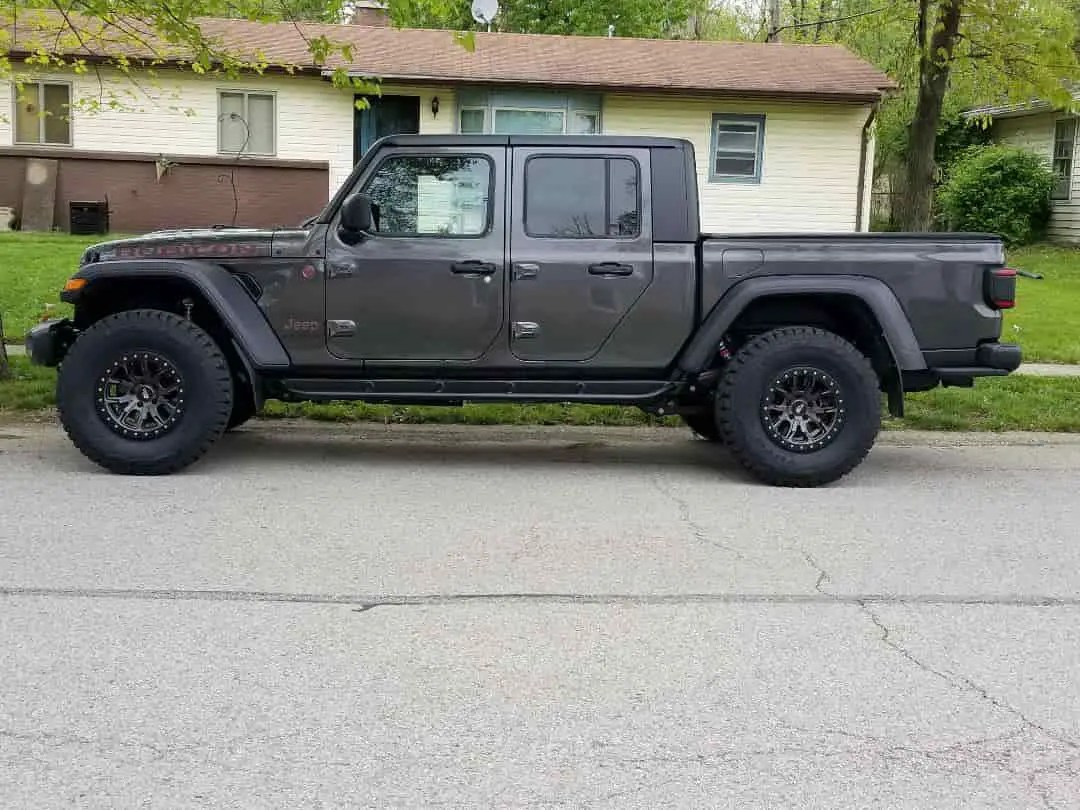
With its smaller size, the 33-inch tire in itself is good-looking. However, compared to the 35-inch and 37-inch tires, it doesn’t hold up aesthetically, especially when it comes to giving the off-road look.
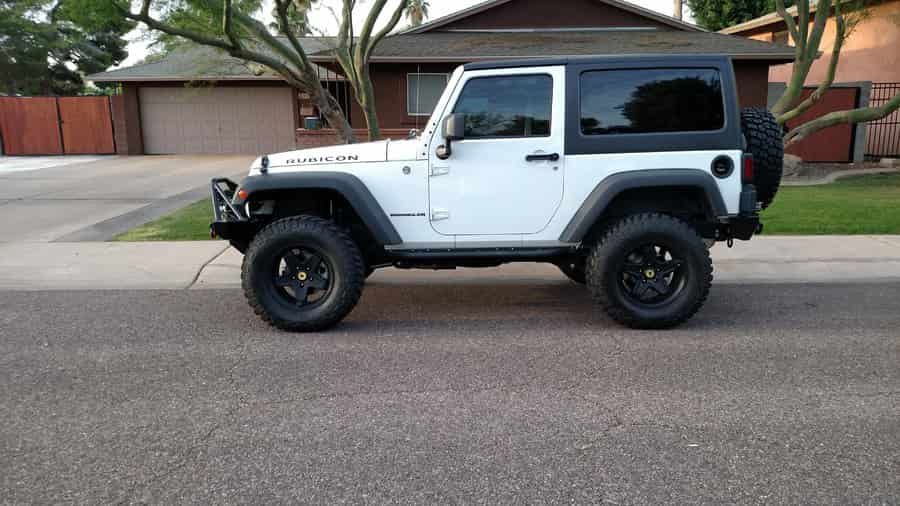
Height & Weight
An inch difference could be the determining factor as to whether or not you will graze the bottom of your vehicle on a rock or narrowly miss it. That’s how significant an inch difference is in tires.
Among the three sizes in the comparison table, 37-inch tire is the highest.
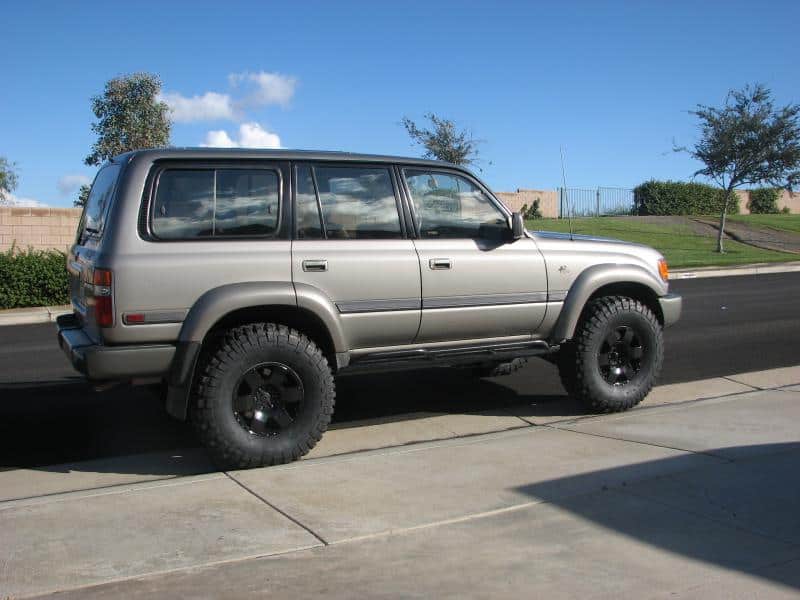
The 35-inch tire sits comfortably between the 33″ and 37″ tire in terms of weight and height. Not only is the 37-inch tire the highest, but it is also the heaviest. This is expected since it takes more rubber to make a bigger tire and rubber isn’t weightless. At 33 inches, this tire offers a minimum ground clearance and is not as heavy. However, a smaller tire increases the accuracy of your vehicle’s speedometer.
Re-gearing
Let’s begin with a quick question. What is re-gearing? Re-gearing is a process that involves changing your ring and pinion gears to a different ratio. Re-gearing changes your vehicle’s balance and torque speed. Depending on the tire size you choose, re-gearing might be necessary. That way, you avoid unnecessary stress on the axle.
The bigger your tire size, the more necessary it is for you to re-gear. This goes without saying that if you have a 37-inch tire, re-gearing is a must. The 33-inch tire doesn’t need re-gearing because of its size. However, for the 35-inch tire, re-gearing is just as necessary as with the 37-inch tire.
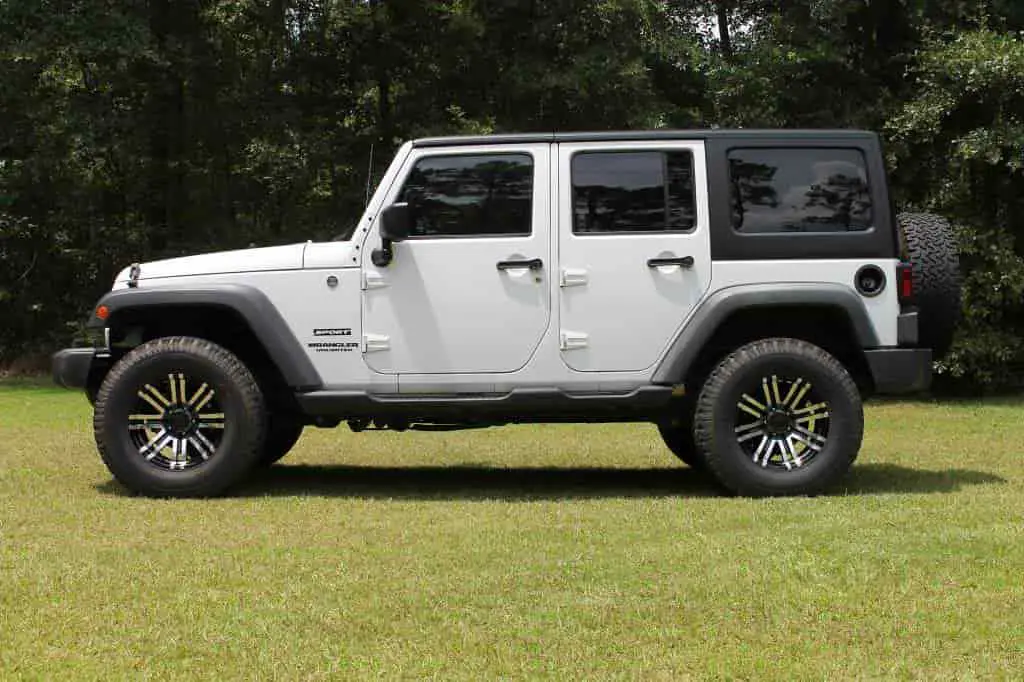
An increase in tire size will change your tire’s roll resistance, rotation, and overall diameter. This is why re-gearing is necessary for bigger tires as it improves your vehicle’s efficiency.
Feel
We’ve constantly heard the phrase “bigger is better”; however, bigger isn’t always better, especially tire feel. The bigger the tires you have installed in your vehicle, the more the sluggish feeling.
The 37-inch tire has the most sluggish feel when in use. Meanwhile, 35-inch tire also has a sluggish feeling, but not as much as the 37-inch tire. With its smaller size, the 33-inch tire offers a less sluggish feel among the three, thus winning this category.
Ground Clearance
With an increase in tire height, so comes an increase in ground clearance. You would need a tire with good ground clearance and this is dependent on tire size/height.
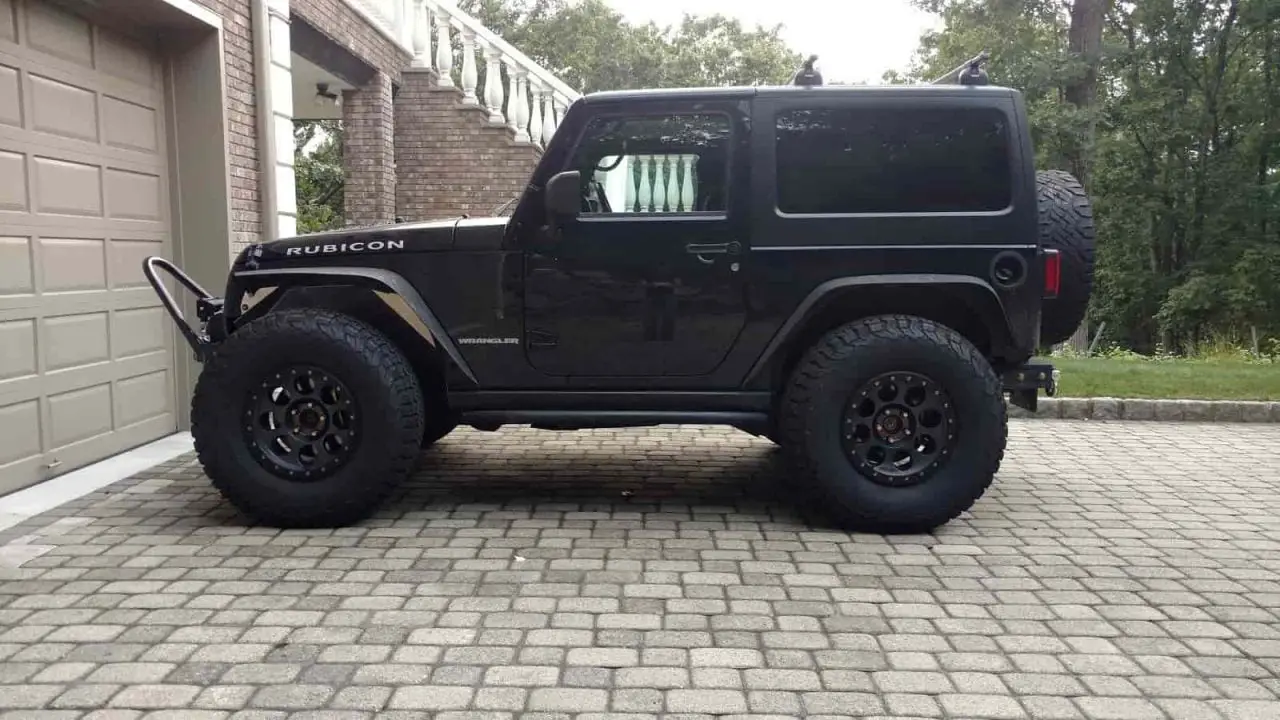
A 33-inch all-terrain tire will do the job of tire designed for rough terrains; however, in terms of ground clearance, you may have trouble driving through bumpy areas. This goes without saying that a 37-inch tire will have more clearance between the ground and the axle than a 35-inch tire. This ground clearance allows you to move easily on bumpy roads.
On-road Performance
It’s time for the 33-inch tire to shine once more. A smaller tire will improve your vehicle’s on-road handling and traction on asphalt. It is because their sidewalls are less flexible. Another reason the 33-inch tire will perform better on-road than the 35″ and 37″ is because their small mass is more aerodynamic.
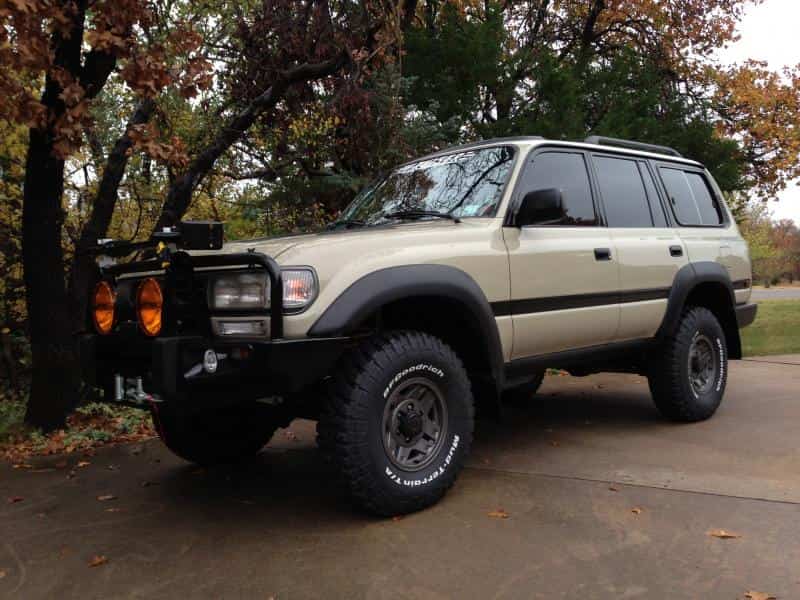
The 37-inch and 35-inch tires aren’t bad on-road; however, they do not match up compared to the 33-inch tire. There’s a reason they don’t install 37-inch tires in sports cars.
Off-road Performance
Taking into consideration the larger tread pattern and general overview of bigger all-terrain tires, we will still refer you back to ground clearance. Your tire’s ability to keep its axle and other essential parts at a safe distance from the ground is critical. Both the 37-inch and 35-inch tires excel in this aspect, with the 37-inch being the better.
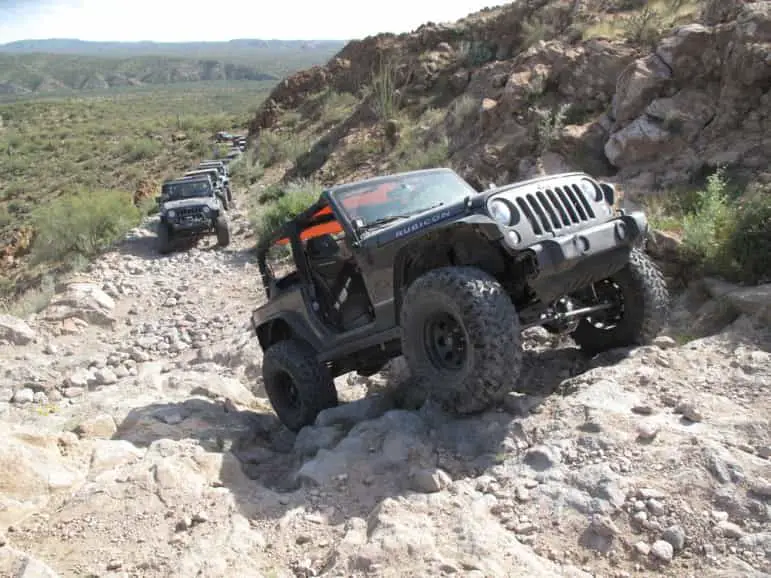
The bigger the sidewall and tire profile, the better your tire will be for off-road driving. Besides, a larger tire features more complex tread patterns, which improves traction/grip. The 37-inch tire wins the off-road section. Thanks to its size, it helps distribute downward pressure in muddy terrain, allowing you to navigate correctly.
Keep in mind that 35″ and 37″ tires have a larger circumference than 33″ tires which is also a plus.
On-road & Off-road Rolling Resistance
A tire’s rolling resistance is the energy your vehicle requires to send your tires to maintain motion over a surface and at a consistent speed.
Among the three tire sizes in comparison, the tire with the lowest on-road rolling resistance is the 33-inch tire. With a 33-inch tire, you can economize your vehicle fuel usage on-road. The 35-inch tire sits between the 33″ and 37″ in terms of on-road and off-road rolling resistance.
In contrast, putting all tire sizes together, the 37-inch tire has the lowest off-road rolling resistance, which allows for higher fuel economy when you are driving off-road.
Cost
The bigger the tire size, the higher it is going to cost. So, when choosing a tire size, you should also consider what you need that tire for. Being the biggest among the three tires, the 37-inch tire is the most expensive, followed by the 35-inch tire. With its smaller size, the 33-inch tire is also less costly.
Pros and Cons of 33 Inch Tires
Pros
- Less sluggish than 35, 37 tires
- Better on-road performance than 35, 37 tires
- Less on-road rolling resistance than 35, 37 tires
- Better fuel economy on-road than 35, 37 tires
- Lower cost than 35, 37
- No re-gearing needed
Cons
- Not as appealing as 35, 37 tires
- Lower ground clearance than 35, 37 tires
- Not as good at off-road performance as 35, 37 tires
- More off-road rolling resistance than 35, 37 tires
- Less fuel economy off-road than 35, 37 tires
33 Tires
35 Tires
Pros and Cons of 37 Inch Tires
Pros
- More appealing than 33, 35 tires
- Higher ground clearance than 33, 35 tires
- Better at off-road performance than 33, 35 tires
- Less off-road rolling resistance than 35, 35 tires
- Better fuel economy off-road than 33, 35 tires
Cons
- More sluggish than 33, 35 tires
- Not as good at on-road performance as 33, 35 tires
- More on-road rolling resistance than 33, 35 tires
- Less fuel economy on-road than 35, 37 tires
- Higher cost than 33, 35
- Re-gearing needed
35 Tires
37 Tires
FAQs
What Is The Best Rim Size For 33 Inch Tires?
When shopping for rims, you want to get one that’ll match your tires. For the 33-inch tires, you would find a rim size of 15 or 16 inches in width to be a perfect match for your tires.
What Is The Best Rim Size For 35 Inch Tires?
Putting a 35-inch tire into a 15-inch wide rim might be catastrophic. Instead, it would help if you went for a rim of at least 17 inches wide.
What Is The Best Rim Size For 37 Inch Tires?
Like the 33″ and 35″ tires, the 37-inch tire must be fitted with a compatible rim. An 18-inch wide rim will do just fine for a 37-inch tire. Some people may still use a 17-inch wide rim on a 37-inch tire; however, 37-inch tires are considerably wider than 35-inch tires. This may overwork the rims causing an effect on their width and offset.
Pick A Lift Kit For Your Jeep – 33″, 35″, And 37″ Tires?
There are several reasons you may want to lift your Jeep. Be it for aesthetics or better off-road driving, getting the best fit that’ll meet your needs is crucial. For the 33-inch tire, little to no modifications to your Jeep are necessary when switching. However, to be extra careful, a lift of 1.5″ on a 33-inch tire will do the trick.
With a 35-inch tire, a lift is compulsory. For proper ground clearance, you will need a lift of 2.5″ to switch safely. If you have a 37-inch tire installed, it means that you are a serious off-roader. You will need a lift of 3.5″ or more to run a 37-inch tire.
Conclusion
Depending on your need and taste, any of these tire sizes would serve as non are bad tire sizes.
This article has exposed you to the differences between the 33″, 35″ and 37″ tires, and which each one is better at. With this information, getting the best-fit tires for your vehicle would be a walk in the park.
